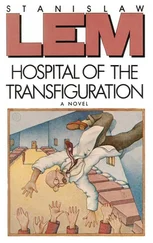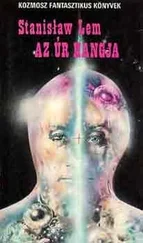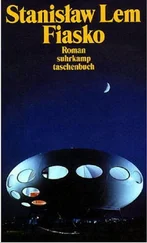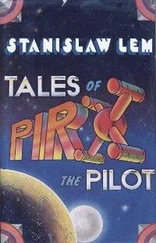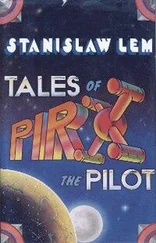“Patrolship AMU-111 to Base,” he said. “AMU-111 to Base. Present reading: sector boundary one-zero-zero-nine-dash-one-zero-one-zero, equatorial zone. Have located trouble, am coming home…”
Pirx landed some six hours later, at which time a full-scale inquiry was launched, the investigation lasting an entire month. The first thing to be overhauled was the scanner. It was a new, improved model, installed on all the AMU ships the year before and until now having a perfect performance record. Not a single malfunction had been reported.
After laborious testing, the electronics engineers finally discovered the cause of the light. After several thousand hours of testing, the vacuum in the cathode-ray tube developed a leak, causing a loose charge to appear on the screen’s inner surface, observable on the outer screen as a milky-white spot. The movements of the charge were governed by a set of complicated laws. During periods of acceleration, the charge would become distended over a broad area, as if flattened against the inside glass, making it appear as if the speck were approaching. When reverse thrust was applied, the charge would withdraw deeper into the tube. Zero and constant acceleration brought the charge slowly back into the center of the screen. It was capable of unlimited movement, but its favorite resting position, during stationary orbit or periods of unpowered flight, was front center. Research on the charge continued, and its dynamics were represented by a sixth-order differential equation. It was also demonstrated that the charge tended to disperse in response to strong light impulses, and to become more concentrated only when the intensity of impulses received by the CRT was extremely low—such as in space, for example, when a ship was farthest from the Sun. If as much as a ray of sunlight brushed the screen, the charge would vanish for several hours.
The findings of the electronics experts filled an entire volume, copiously laced with mathematical formulas. The next to tackle the case was a team of doctors, psychologists, and specialists in astroneurosis and astropsychosis. And again, after many hours of investigation, it was shown that the loose charge pulsated, which to the naked eye manifested itself as tiny dark squiggles creeping across the luminous disk.
The frequency of these pulsations, too brief to be recorded individually by the eye, affected the so-called theta rhythm of the brain’s cortex, intensifying the oscillation potential to such a degree that it could induce a seizure identical to an epileptic fit. Other contributing factors were the state of absolute inertia and the absence of any external stimuli, except for prolonged and uninterrupted exposure to a pulsating light.
The experts credited with these discoveries became internationally famous. Today electronics experts the world over are conversant with the Ledieux-Harper effect, caused by the formation of loose charges in high-vacuum cathode-ray tubes, whereas astrobiologists are familiar with Nuggelheimer’s atactic-catatonic-clonic syndrome.
Pirx remained an unknown in the world of science. Only the most assiduous readers could infer, from remarks printed in fine type in some of the evening editions, that, thanks to Pirx, pilots of the future would be spared the fate of Thomas and Wilmer, those two unfortunate victims who perished in the outer regions of space after losing consciousness in a high-speed chase after an illusory light.
The denial of fame did not bother Pirx in the slightest. Nor did he mind having a new tooth put in to replace the one demolished by his knee, nor even the fact that he had to pay for it out of his own pocket.

